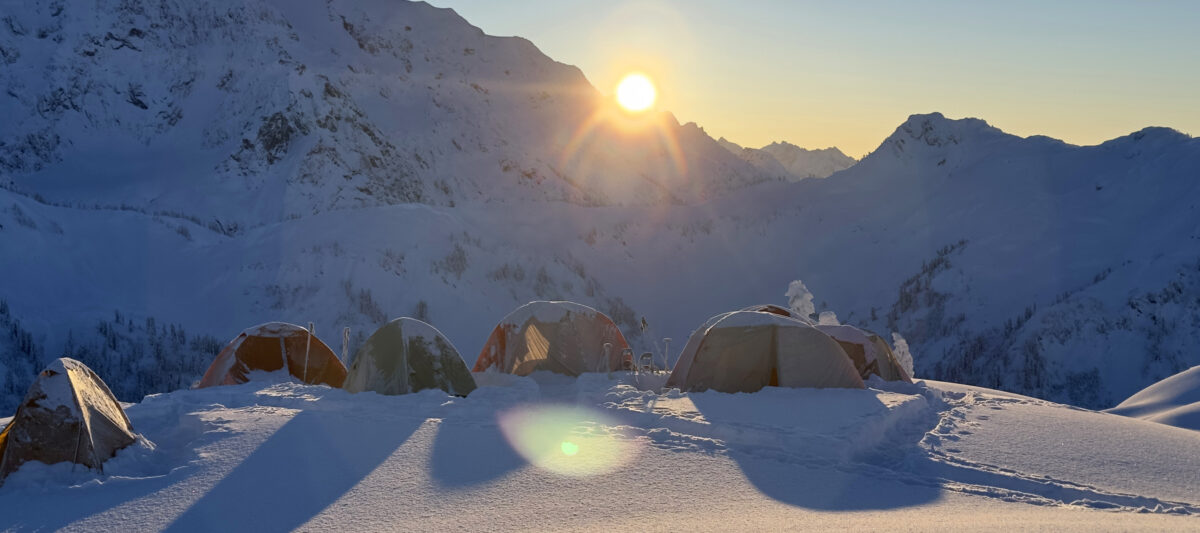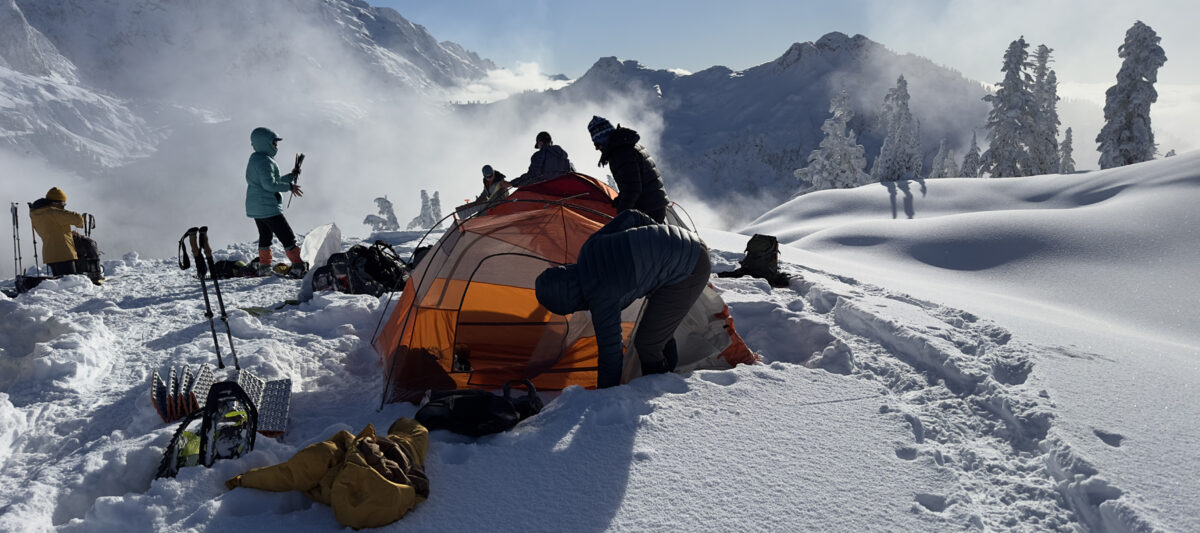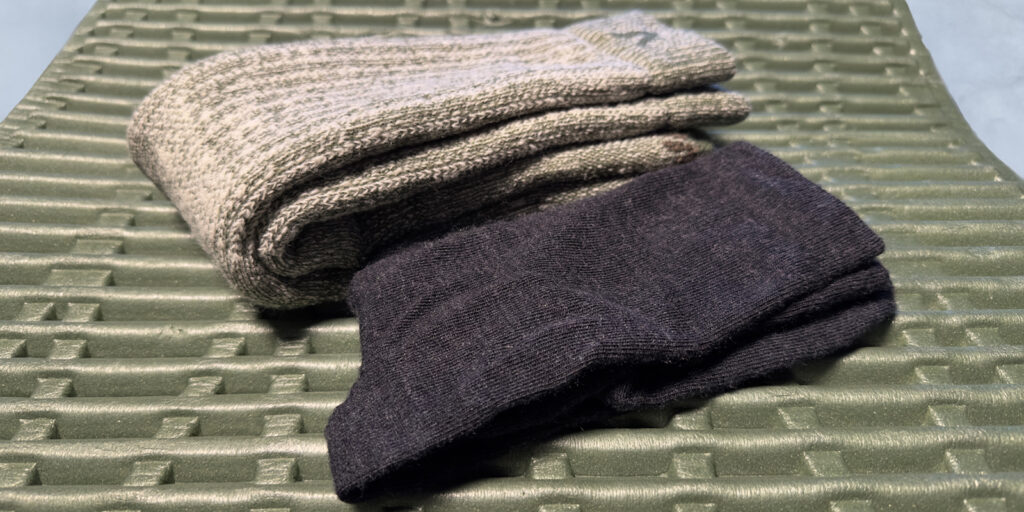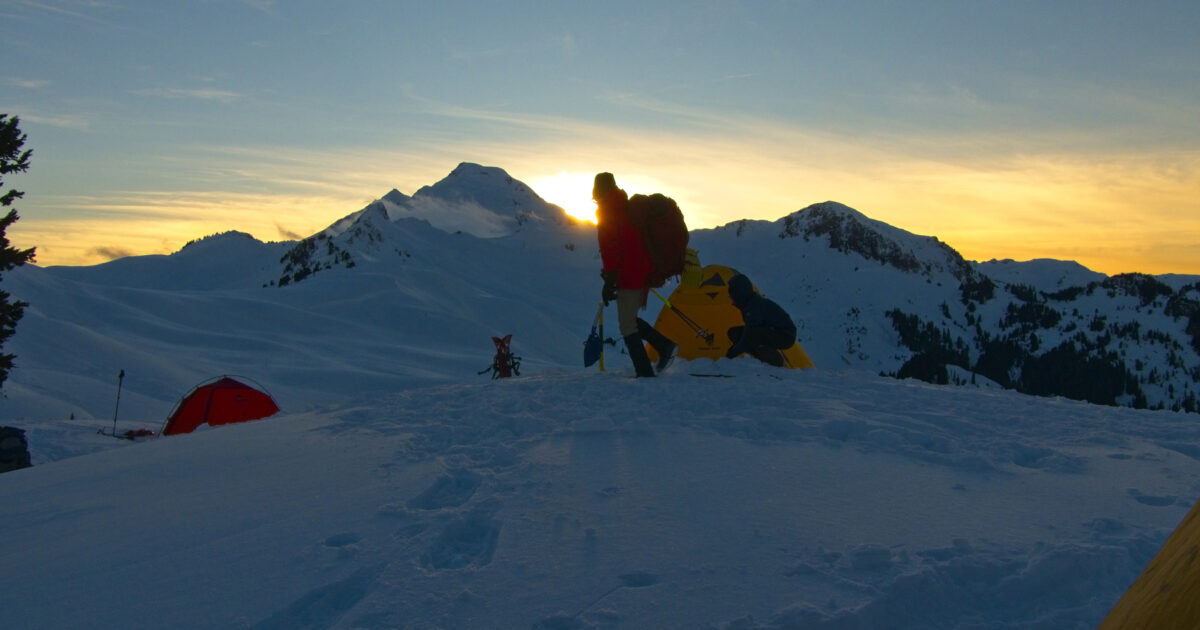There is nothing more satisfying than being comfortable in extremely harsh weather. It is possible to be in below-freezing temperatures for multiple days without ever shivering or feeling cold. Staying warm in cold weather requires a combination of gear and skill. If you don’t have the appropriate gear you will be cold and uncomfortable. You can bring the appropriate gear but if you fail to use it correctly you’ll be miserable. You need gear to insulate you from the elements but you also need to adjust your behavior in the cold.
Winter backpacking is not about learning how to endure the cold. It is about learning ways to stay warm.
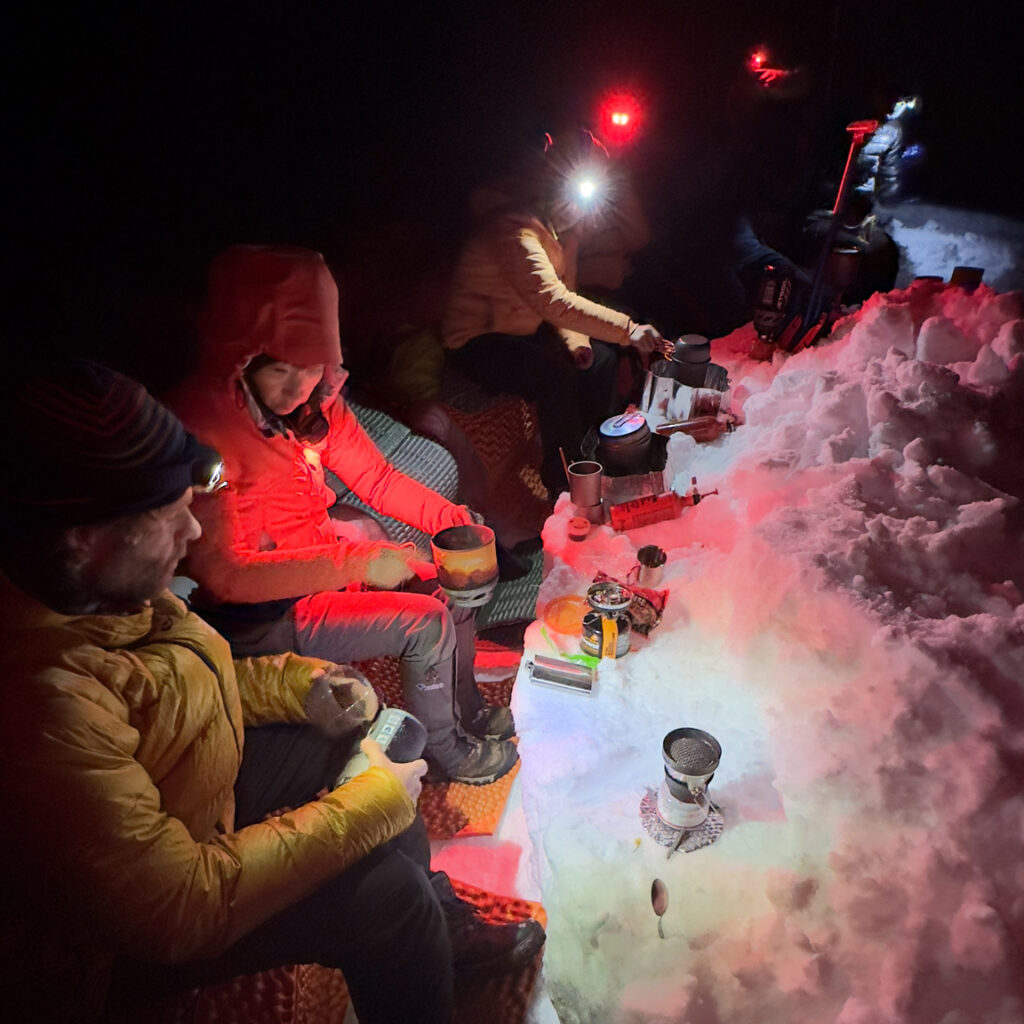
I don’t build fires to stay warm. I don’t do jumping jacks to stay warm. I don’t use unreliable tools such as hand warmers or electrical warming devices. So how do I stay warm and comfortable? This post will focus on staying warm around camp and staying warm inside your tent.
